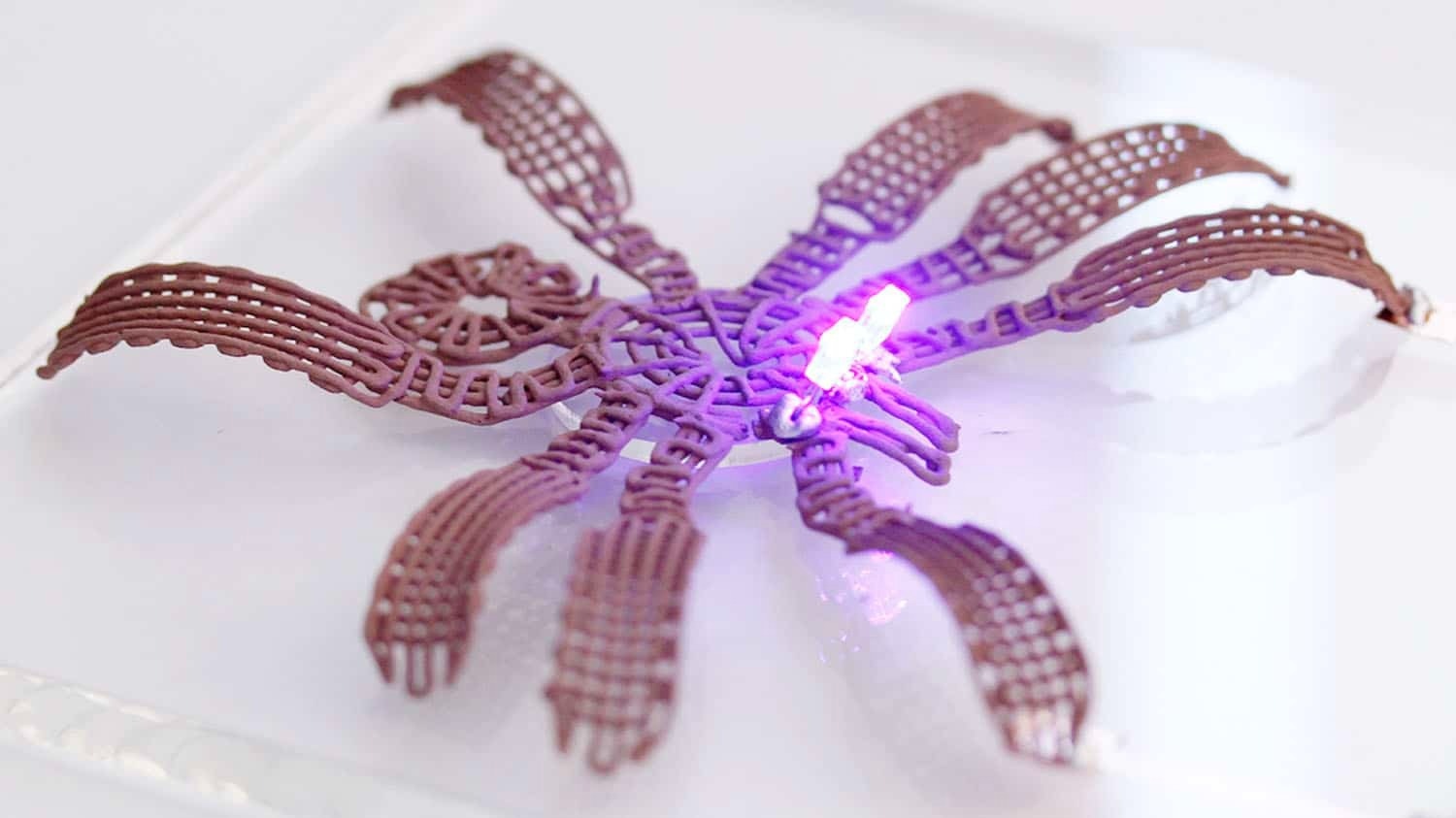Scientists have built a highly electrically conductive metallic gel that could be used to print three-dimensional (3D) solid objects at room temperature.

Researchers have developed a metallic gel that is highly electrically conductive and can be used to print three-dimensional (3D) solid objects at room temperature. Printed objects can be engineered to change shape as the gel dries; a phenomenon called “4D printing,” with the fourth dimension being time. This image shows a metallic spider that was printed at room temperature using the metallic gel, and which assembled and solidified into its final 3D shape via 4D printing. Image Credit: Michael Dickey.
3D printing has revolutionized manufacturing, but we’re not aware of previous technologies that allowed you to print 3D metal objects at room temperature in a single step. This opens the door to manufacturing a wide range of electronic components and devices.
Michael Dickey, Study Co-Corresponding Author and Camille & Henry Dreyfus Professor, Chemical and Biomolecular Engineering, North Carolina State University
To create the metallic gel, the researchers started with a solution of micron-scale copper particles that were suspended in water. They then added a minute amount of an indium-gallium alloy that is a liquid metal at room temperature. The mixture was then stirred together.
As the mixture was stirred, the liquid metal and copper particles essentially stuck to each other, forming a metallic gel “network” within the aqueous solution.
This gel-like consistency is important because it means you have a fairly uniform distribution of copper particles throughout the material. This does two things. First, it means the network of particles connect to form electrical pathways. And second, it means that the copper particles aren’t settling out of solution and clogging the printer.
Michael Dickey, Study Co-Corresponding Author and Camille & Henry Dreyfus Professor, Chemical and Biomolecular Engineering, North Carolina State University
The resulting gel can be printed with a standard 3D printing nozzle and retains its shape after printing. Moreover, when left to dry at room temperature, it becomes even more solid while retaining its shape.
However, some intriguing things can happen if users decide to apply heat to the dried printed object.
The scientists determined that particle alignment impacts how the material dries. For instance, if a cylindrical object is printed, the sides would contract more than the top and bottom as it dries. When something dries at room temperature, the process is slow enough that no structural changes occur in the object.
However, if heat is applied – for example, the object is placed under a heat lamp at 80 degrees Celsius – the rapid drying can cause structural deformation. As this deformation is predictable, it means that the shape of a printed object can change after it is printed by controlling the pattern of the printed object and the amount of heat the object is exposed to while drying.
Ultimately, this sort of four-dimensional printing—the traditional three dimensions, plus time—is one more tool that can be used to create structures with the desired dimensions. But what we find most exciting about this material is its conductivity.
Michael Dickey, Study Co-Corresponding Author and Camille & Henry Dreyfus Professor, Chemical and Biomolecular Engineering, North Carolina State University
Michael Dickey adds, “Because the printed objects end up being as much as 97.5% metal, they are highly conductive. It’s obviously not as conductive as conventional copper wire, but it’s impossible to 3D print copper wire at room temperature. And what we’ve developed is far more conductive than anything else that can be printed. We’re pretty excited about the applications here.”
“We’re open to working with industry partners to explore potential applications, and are always happy to talk with potential collaborators about future directions for research,” Dickey notes.
The research was funded by the National Natural Science Foundation of China, under grant number 52203101, and by the China Scholarship Council, under grant number 201906250075.
3D and 4D Printing Metals at Room Temperature using Metallic Gels
Video Credit: North Carolina State University
Journal Reference:
Xing, R., et al. (2023). Metallic gels for conductive 3D and 4D printing. Matter. doi.org/10.1016/j.matt.2023.06.015.